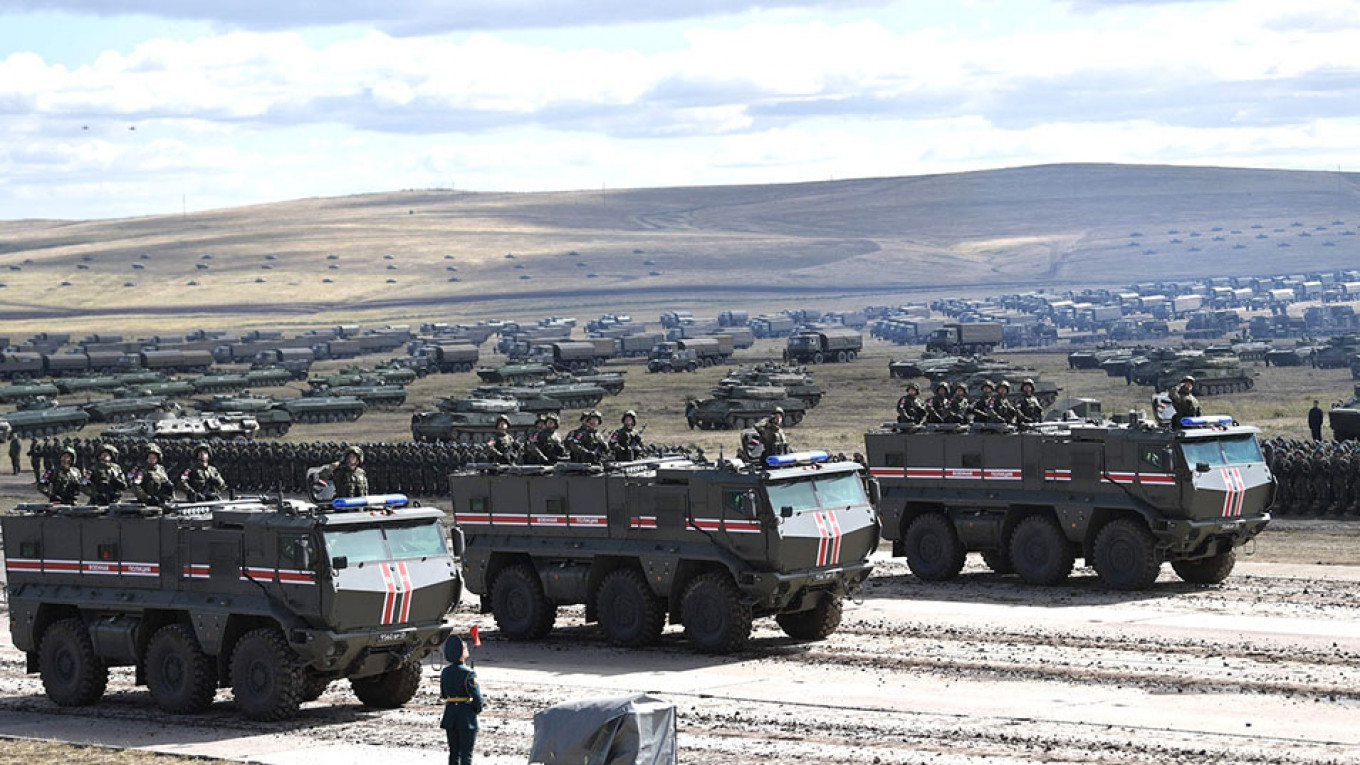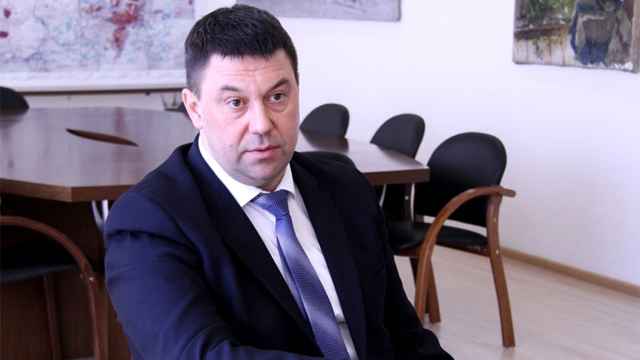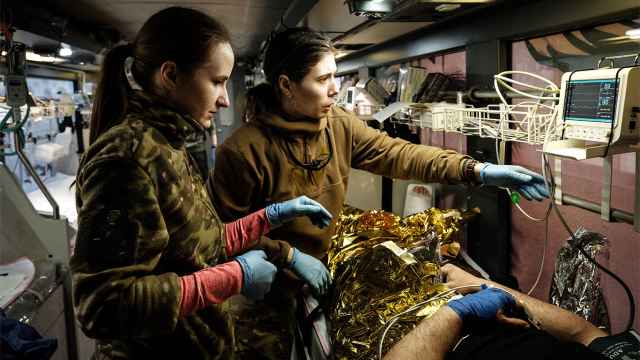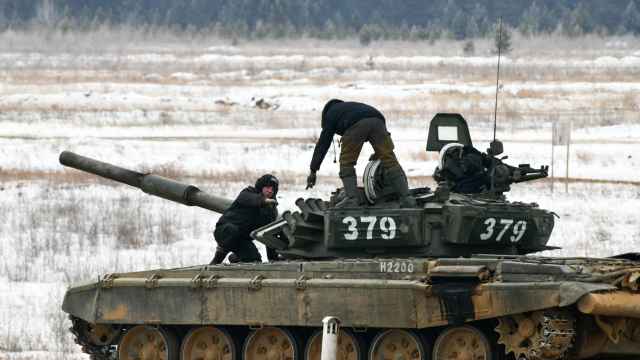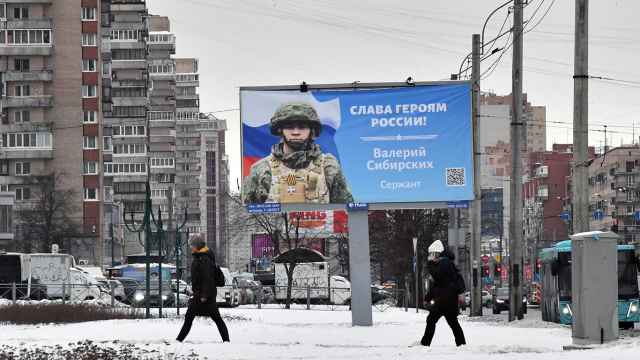In response to sanctions and attempts to isolate Russia, the Kremlin has built up a budget with a very comfortable surplus (3.7% of GDP). Seeing debt as a dependency, the Kremlin has driven Russia’s net public debt — that is, external debt plus all kinds of domestic debt — to zero. Russia’s international foreign exchange reserves are at $530 billion. While Moscow is contemplating stimulus measures for Russia’s stagnating economy, we are looking at Russia’s other success story, its military reforms and modernization program. In a conversation with Michael Kofman, a senior research scientist at CNA, we discuss how far-reaching those reforms were, what they tell us about Russia’s world strategy, and how Russia’s prospects in international politics compare to those of the Soviet Union.
Maxim Trudolyubov: Against the background of the Kremlin’s stellar macroeconomic performance, Russian citizens are not doing particularly well: real incomes have been falling for five years now. It does seem as though the choice between guns and butter has been decided in favor of guns. How does this behavior compare to that of other big nations?
Michael Kofman: There are by definition few powers comparable to Russia. The issue of guns and butter is interesting. It seems the Russian state understands how to create a stable macroeconomic picture, conduct long-term investment in defense modernization and defense planning, and have a reasonably good hedging strategy against an uncertain future. However, the ruling regime seems to have no ability and no desire to conduct major reforms. It has in effect committed to a stable, prolonged stagnation.
On the political front, Russia feels like a China understudy. On the military front, Russia, as a country that has gone through transformative military reforms and modernization, is definitely the leader and China is more the understudy. Russia’s military reforms preceded China’s reforms by quite some time. Russia’s military reform and modernization on the whole have been successful in restoring the armed forces as a useful instrument of national power. Arguably the only Russian institution that has been successfully reformed in recent years and come out the better for it has been the military.
MT: Can you elaborate on that China-Russia comparison?
MK: Comparing military power and spending is a difficult task. China does have a large military budget, but so does Russia. Starting in late 2008, the Russian military has gone through two periods of reform. The first one was in 2008–2012, under Army General Nikolai Makarov and Defense Minister Anatoly Serdyukov, the second from 2013 to the present, under General Valery Gerasimov and Defense Minister Sergei Shoigu. These efforts have transformed the Russian military and continue to do so. Russia invested a great deal of money in defense modernization from 2011 to 2015. But today we are several years past the peak of Russian defense spending. The defense budget is now declining in real terms. The Russian state has chosen to steadily reduce spending both on defense and on national welfare.
Russia is doing this clearly cognizant of the mistakes of the Soviet Union, which continued fairly large defense spending during its period of economic decline. To get different stakeholders to agree to his reforms, Mikhail Gorbachev had to subsidize their various agendas. Russia is trying to avoid that.
MT: Despite the large cuts, Russia’s defense spending is still huge. What is the best way to compare it to other countries’ military budgets?
MK: In purchasing power parity (PPP) terms, the Russian defense budget is really large. The Stockholm International Peace Research Institute (SIPRI) releases an annual report that looks at countries’ defense spending, converts it into average U.S. dollars for the year, and shows us where everybody is. Thus, if the ruble-to-dollar exchange rate worsens by 50% in the course of a year, then Russia will appear to have a defense budget that is half its actual size. Those comparisons are why many do not appreciate the real size of Russia’s defense budget. My estimate for the actual purchasing power of Russia’s defense budget is somewhere between $150 and $180 billion.
You have to do it in PPP terms because Russia’s defense industry is largely autarkic. And U.S. sanctions have made it even more self-sufficient. The difference between Russia and Saudi Arabia is that Russia buys its weapons from Russian contractors and Saudi Arabia buys from the United States. Last year’s Russian defense budget (estimated in this year’s SIPRI report at $61 billion in exchange rate terms) appeared to be smaller than France’s. It’s delusional to think Russia spends less on defense than France, in real terms.
Russia can afford to buy far more force and equipment than Western countries. Western nations tend to be high-income economies, while Russia is on the higher end of the spectrum of middle-income countries. In Western countries, the defense force eats a lot more than it does in Russia. Even though the United States or its allies may be spending quite a bit of money, much of that does not go to defense procurement or R&D. The United States spends about 30% of its defense budget on procurement and R&D, while Russia spends close to 50%. You can buy a lot of modernized or new equipment with that kind of money spent every year.
MT: How serious are the cuts and their consequences?
MK: On the defense industry side, they are really struggling with the sequester because the defense industry expanded to meet all those government orders. And now the government has cut back the amount of hardware it is buying.
The Russian military has been the Russian state’s most visible success story. So they have to keep bankrolling it. The Russian problem is that this amount of spending is not a lot compared to that of the United States or China, but it is a serious defense burden for a country without a dynamic economy or reasonable economic growth at least matching global average GDP growth. Russia spends 2.8% of GDP on just the national defense order, and when you include all the military expenditures, the figure rises to over 4%.
The structure of Russia’s economy is problematic. It cannot generate growth without major reforms, but, more important, the state has ended up taking over a large part of the economy. The state is making interesting bets. I do not quite understand how the regime intends to successfully get past the problem of declining incomes and the population’s concerns regarding living standards. Suppression, distraction, or repression can work for only so long. The state has a strategy for maintaining macroeconomic health and building up the foundations of economic and military power. But it does not seem to have a plan for what to do with actual people.
MT: Is this all opportunistic and tactical, or do you see a “grand strategy” behind Russia’s decisions and behavior?
MK: My take on the regime’s strategy is this. Moscow wants a new détente; it really wants what the Soviet Union got from 1969 to 1979. The Soviet Union did quite well in the first half of the Cold War, and it got a rather good deal from the United States. If the Soviet Union had chosen to end the Cold War in 1970s and then focused on economic reform, Gorbachev might have succeeded in extending the system’s life span. I’m not suggesting that would have been a positive outcome, but from the standpoint of strategy, the Soviet Union was crazy, and de facto would not take yes for an answer when it got it from the United States.
The Russian strategy to me is about imposing strategic costs on the United States. It is a way of getting to a deal on the basis of how successful you are in the game of imposing costs, particularly asymmetric costs, on the other side. Power distribution is inherently asymmetric, but in this context it provides a comparatively cheaper way of countering adversary superiority in forms or methods of competition. The reason why the Soviet Union got the deal in the 1970s was not only that the Soviet Union was pretty successful in the first half of the Cold War in actually contesting the United States but that it grew more powerful and the U.S. position grew weaker at home and abroad. That is why, by the 1970s, the United States was interested in making a deal.
This time around Russia is not going to grow more powerful because it is stagnating. That said, if the Russians can demonstrate that they are resilient and prepared to endure the current confrontation, then they might get another deal from the United States down the line, or so the Kremlin hopes. To be seen as resilient, you have to shore up the economic and military foundations of power so that you can demonstrate the ability to stay in the fight for a long time. Moscow is also actively trying to making itself a problem. Russia seeks to challenge U.S. policy abroad, gain leverage, and raise the transaction costs for the United States on the kinds of deals that Moscow does not particularly care about but its opponents do, such as Venezuela or Libya. Moscow comes in, establishes leverage on the cheap, and engages in arbitrage because it wants to raise the transaction costs for the United States and get revenge for various U.S. policies that seek to exert pressure on, punish, or coerce Russia.
MT: How does all this affect the probability of a real war?
MK: Another important component of Russian strategy is launching destructive campaigns as an indirect form of competition. These are raiding campaigns, exemplars of indirect warfare, attacking state cohesion, disrupting decision making, and inflicting considerable political or economic damage. Probably the best-known political warfare campaign was the hacking of the 2016 U.S. elections. What matters is not whether the campaign is an operational success but whether the target’s reaction yields a substantial strategic benefit. One can inflict a large amount of damage with very few resources, and the efficacy can be forever debated, but the target of this type of indirect warfare might produce an outsized reaction.
Direct competition is a strategy that exerts pressure on your adversary. The Soviet Union and NATO engaged in a large-scale conventional and nuclear force build-up during the Cold War. That is direct competition. It is measurable; it requires money and resources to sustain it. Indirect competition is how most of the Cold War actually played out. The Soviet Union and the United States spent the entire Cold War fighting outside Europe. Indirect competition is meant to spread thin your adversary’s forces and cause it to diffuse its resources, so they are fighting you on two dozen battlefields, and none of those battlefields is remotely related to the main object in question. If you believe that Russia’s principal interest is the security architecture of Europe, and the future of Ukraine and Belarus, then the indirect approach is to set about being a pain for the United States all across the Middle East, Africa, and Latin America. Indirect approaches would typically include engaging in proxy wars, covert operations, coups and assassinations, and political warfare; using mercenaries and backing adversary insurgent groups; and limited conventional deployments or direct interventions in distant conflict zones.
This is a common feature of great power competition. To me, the Russian approach is always both direct and indirect, but the latter is more important because that is where most of the action takes place. Direct competition leads to force build-up, exercises, and military signaling, but actual war between peer nuclear powers is a decidedly low-probability event. The Russian strategy is based on the idea of being a major thorn in the side of the United States and hoping that over time, the United States will be irritated enough, or exhausted enough, to be willing to close out the competition and negotiate.
MT: Comparing Russia and the Soviet Union is tricky. On the one hand, the two entities are very different: they exist in different epochs and have, or had, different economies and political systems. But Russia’s current decision makers do keep the U.S.S.R. in mind, of course, and are learning from its mistakes. How would you compare the U.S.S.R.’s and Russia’s strategies?
MK: There are two major differences between Russia’s strategy and that of the Soviet Union. First, the Soviet Union’s strategy was not based on the idea of getting a deal. The Soviet Union believed that it actually had an alternative model of economic and political development, and over time, as it got into the Cold War, the Soviet Union was engaging in proxy warfare and political warfare across the world for no obvious reason. Bureaucratically, it became a self-licking ice cream cone, an activity that justifies itself. What was strange is that when the Soviet Union got the best deal it could get from the United States in 1975, in the form of the Helsinki Accords, it kept expanding areas of competition into Africa and Latin America. Russia is much more limited in resources and ambition, lacking the Soviet Union’s ideology and superpower ambitions, though old habits die hard. Moscow is not competing for the role of co-equal superpower or advancing an alternative model of political-economic development.
Second, the Soviet Union was always much weaker than the United States, but the Soviet Union was America’s sole real competitor, which meant that it had to bear the brunt and burden of that confrontation. The U.S.S.R. peaked at 58% of America’s GDP in the 1970s. Eventually the Soviet Union exhausted itself when it exhausted all the benefits and its alternative model for modernization turned out to be a false one. But Russia is not America’s principal problem, China is. What was always missing in the Soviet Union’s life was another major competitor to the United States that would force the United States to commit a large part of its resources to a different fight.
The Russian state might think that it is going to get a deal because the challenge from China grows every year and the United States will not be able to afford to continue a strategic competition with both China and Russia, given that what Russia wants is limited (at least in Moscow’s view) compared to China’s ambitions. Moscow sees itself in relative decline when compared to China’s rise but resurgent vis-à-vis the United States. The reality is that Moscow is about the strongest it has been relative to the United States in the last three decades, and perceives U.S. influence to be in decline. This does not mean that Russia is not stagnating and facing decline itself, but we have to consider elite perceptions of relative power. Hence Moscow is backing, to the extent it can, a Chinese challenge to the United States, because China is part of Russia’s answer to its own woes. How realistic that strategy is only time will tell.
Moscow’s theoretical deal is to renegotiate the security architecture of Europe, attain tacit recognition of a privileged sphere of influence, and regain its status as a great power, with attendant privileges. From Russia’s perspective, this does not need to happen today; it could be sometime in the 2020s or 2030s. Moscow just needs to show that it has the resources to outlast the contest and that it can be a huge pain in the U.S.’s side. From Moscow’s perspective this strategy is not an unreasonable bet, in light of the strong asymmetry between Moscow’s resources and those of the United States.
MT: How successful do you think this strategy is going to be, given Russia’s economic weakness?
MK: Historically, Russia tends to do better in international affairs than one might expect from a country with such weak economic foundations. China, by contrast, consistently underperforms. Typically, expectations of Chinese performance and influence go unfulfilled.
For Moscow, there has been a dissonance, an incongruence between expectations and probable outcomes. Russian elites believe their country is entitled to a privileged role, a deciding position in international politics. But Russia has historically struggled to build the kind of political and economic system that would nurture sustainable economic growth. As a consequence, Russia simply lacks the economic power, dynamism, and influence to underwrite the status and the role it wants in international affairs. This relegates Russia to the position of a weak great power. Such a disconnect between performance and expectations has led to feelings of grievance on Moscow’s part that it does not get the respect and enjoy the status it feels entitled to.
In my experience, Western elites have a way of looking at the world that privileges economic performance, at times excluding important dimensions of power. And they tell Russia, “Look, given where you rate in terms of your economic power and influence, you do not actually deserve the status you seek.” The challenge I see for the United States is to figure out a strategy for dealing with Russia’s influence in the world. Russia is an enduring power. It may not be the strongest, it may not be the best performer, but it’s not going to go away. Russia goes through cycles of power. Russia mobilizes, then stagnates, declines, and after some time becomes resurgent again. However, Russian power and influence do not simply disappear. Whenever people think that Russia is going away, usually within one generation whoever is in charge of the Russian state rebuilds enough economic and military power to become a serious pain in the side again. It only takes about twenty years for Russia to go from state collapse, a revolution, or a civil war to resurgence. This has happened at least twice in the last hundred years.
So far, no modern Russian leader has solved the core Russian problem of how to find a sustainable path to modernization and economic development, but the leadership has found a way to rebuild enough power and influence to assert Russia’s interests and be a real problem for the dominant superpower of the time. In some respects, I sense that the U.S. political class does not understand why Russia does not simply go away as a power. We tend to suffer from the paper tiger fallacy. Moscow is seen as menacing, aggressive, but also incredibly weak. It’s a caricature-like perception that lacks nuance or balance. The old adage still holds: Russia is never as weak or as strong as it looks.
This article was first published by the Wilson Center.
A Message from The Moscow Times:
Dear readers,
We are facing unprecedented challenges. Russia's Prosecutor General's Office has designated The Moscow Times as an "undesirable" organization, criminalizing our work and putting our staff at risk of prosecution. This follows our earlier unjust labeling as a "foreign agent."
These actions are direct attempts to silence independent journalism in Russia. The authorities claim our work "discredits the decisions of the Russian leadership." We see things differently: we strive to provide accurate, unbiased reporting on Russia.
We, the journalists of The Moscow Times, refuse to be silenced. But to continue our work, we need your help.
Your support, no matter how small, makes a world of difference. If you can, please support us monthly starting from just $2. It's quick to set up, and every contribution makes a significant impact.
By supporting The Moscow Times, you're defending open, independent journalism in the face of repression. Thank you for standing with us.
Remind me later.



